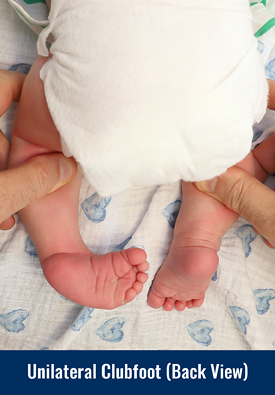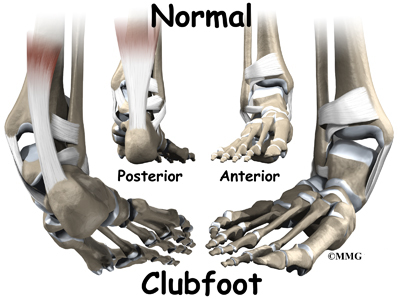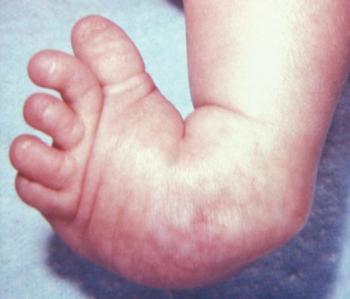Newborn Club Foot Causes - Clubfoot Information Mount Sinai New York

Newborns and infants at scottish rite for children are treated nonsurgically in two ways. Clubfoot definition clubfoot is a condition in which one or both feet are twisted into an abnormal position at birth. The article talks about clubfoot in just born babies, a condition where the foot is twisted and not in normal position. Clubfoot is usually diagnosed during a newborn exam, though it can sometimes be seen during a fetal ultrasound in the womb. All babies born with club foot need treatment. This twisting causes the toes to point toward the opposite leg. Learn how clubfoot is treated. Causes for clubfoot are not understood.
Club foot is the condition of foot deformity of the newborn child in which either or both the feet will be twisted or bent towards the toes inward. Genetics and environmental factors seem to play a major role. The article also details the risks and this condition can often be part of a broader, more complicated syndrome.

In some children, bones may also be abnormal in terms of shape, size, or position.
In some children, bones may also be abnormal in terms of shape, size, or position. Genetic factors are believed to play a major role, and some. Club foot, stage ii deformity. Clubfoot describes a range of foot abnormalities usually present at birth (congenital) in which your baby's foot is twisted out of shape or position. Clubfoot definition clubfoot is a condition in which one or both feet are twisted into an abnormal position at birth. The symptoms of clubfoot vary but are easy to identify by a medical professional. Clubfoot is a birth defect that causes the newborn's foot or feet to appear twisted at the ankle. Clubfoot is a fairly common birth defect and is usually an isolated problem for an otherwise healthy newborn. The exact cause of club foot is still unknown as it is a birth defect. Club foot is a very treatable condition. If either of the parents or any of their children born earlier have a club foot, then the newborn baby also has the possibility of developing this condition. Club foot often affects the forelimbs in most cases, whereby the hoof has a deformed shape, making walking difficult or painful. Treatment most commonly consists of a series of castings for the newborn with frequent cast changes to gradually correct the deformity. The foot points down and inwards, and the soles of the causes.
Genetics and environmental factors seem to play a major role. Club foot can affect 1 or both feet. Clubfoot definition clubfoot is a condition in which one or both feet are twisted into an abnormal position at birth. Club foot is a very treatable condition. Approximately 1 per 1000 live births in the usa. Learn how clubfoot is treated. In some children, bones may also be abnormal in terms of shape, size, or position.

Club foot can occur prior to or after birth.
Clubfoot is a fairly common birth defect and is usually an isolated problem for an otherwise healthy newborn. Club foot can affect 1 or both feet. Clubfoot definition clubfoot is a condition in which one or both feet are twisted into an abnormal position at birth. The treatment will not stop your child from developing normally. Clubfoot doesn't improve without treatment. Clubfoot is usually diagnosed during a newborn exam, though it can sometimes be seen during a fetal ultrasound in the womb. Clubfoot happens because the tendons (bands of tissue that connect muscles to bones) and muscles in and around the foot are. It's easy to correct in most cases, so most children can it be prevented? Most infants who have clubfoot have no identifiable genetic/syndromal/extrinsic cause. In some children, bones may also be abnormal in terms of shape, size, or position.
Club foot often affects the forelimbs in most cases, whereby the hoof has a deformed shape, making walking difficult or painful. Learn about foot problems and deformities in newborn babies as well as treatments, which may range from simple observation to surgical intervention. Genetics and environmental factors seem to play a major role. The exact cause of club foot is not known. Causes of clubfoot in babies.

Clubfoot happens because the tendons (bands of tissue that connect muscles to bones) and muscles in and around the foot are.
The front half of an affected foot turns inward and the heel. Clubfoot actually describes an array of foot deformities that cause your newborn baby's feet to be twisted, pointing down and inward. Clubfoot describes a range of foot abnormalities usually present at birth (congenital) in which your baby's foot is twisted out of shape or position. Approximately 1 per 1000 live births in the usa. Newborns and infants at scottish rite for children are treated nonsurgically in two ways. The exact genetic mechanism of inheritance has been extensively. Some babies have clubfoot together with other health conditions, like spina bifida. Clubfoot definition clubfoot is a condition in which one or both feet are twisted into an abnormal position at birth. Club foot is a very treatable condition. Club foot, stage ii deformity. Newborn foals with severe club foot may be unable to stand and nurse correctly. The exact cause of club foot is still unknown as it is a birth defect. Clubfoot is genetic as well since it can be passed down through families so if someone in your family has clubfoot or had clubfoot at birth. Hence doctors recommend that clubfoot treatment start immediately after birth.
Clubfoot causes one or both feet to twist into an abnormal position, and can be mild or serious club foot causes. Here's how to why do my newborn's feet turn inward?

Approximately 1 per 1000 live births in the usa.

Clubfoot doesn't cause pain, but if it's not treated, it can make it hard for a child to walk without a limp.
Clubfoot causes one or both feet to twist into an abnormal position, and can be mild or serious.

Club foot is a very treatable condition.

Club foot can affect 1 or both feet.

Learn more about the causes, symptoms, diagnosis and treatment options provided by scottish rite treatment of clubfoot ideally begins at an early age.

The foot abduction brace is used only after the clubfoot has been completely corrected by manipulation, serial casting, and possibly a heel cord tenotomy.

Children do better if you develop a fixed routine for the bracewear.

The foot points down and inwards, and the soles of the causes.

Genetic factors are believed to play a major role, and some.

All babies born with club foot need treatment.

Clubfoot happens because the tendons (bands of tissue that connect muscles to bones) and muscles in and around the foot are.

Most infants who have clubfoot have no identifiable genetic/syndromal/extrinsic cause.

Clubfoot is mainly idiopathic, which means that the cause is unknown.

Clubfoot is a birth defect that makes one or both of a baby's feet point down and turn in.

Clubfoot is a birth defect that causes a child's foot to point inward instead of forward.

The treatment will not stop your child from developing normally.

The symptoms of clubfoot vary but are easy to identify by a medical professional.

Hence doctors recommend that clubfoot treatment start immediately after birth.

It's not painful for babies, but it can become painful and make it difficult to walk if it's not treated.

Club foot, stage ii deformity.

Club foot, also known as talipes, is a congenital problem, which means that it is present at birth.

Learn about foot problems and deformities in newborn babies as well as treatments, which may range from simple observation to surgical intervention.

Most clubfeet can be successfully corrected using the nonsurgical instead of being straight, a clubfoot points down and turns in.

How is club foot treated?

Clubfoot doesn't cause pain, but if it's not treated, it can make it hard for a child to walk without a limp.
:max_bytes(150000):strip_icc()/clubfoot_before-56a6fb603df78cf7729142e3.jpg)
They should be referred to a paediatric orthopaedic surgeon and a specialist physiotherapy.

Talipes or club foot is common in newborns and is either positional and structural.

The article talks about clubfoot in just born babies, a condition where the foot is twisted and not in normal position.

The foot points down and inwards, and the soles of the causes.

Newborns with a club foot are often treated with bracing, physical therapy, casting, or surgery.

The foot abduction brace is used only after the clubfoot has been completely corrected by manipulation, serial casting, and possibly a heel cord tenotomy.
Posting Komentar untuk "Newborn Club Foot Causes - Clubfoot Information Mount Sinai New York"